14.2: Pop Art
- Page ID
- 32001
|
Name |
Native Country |
|
Andy Warhol |
United States |
|
Edward Ruscha |
United States |
|
Robert Rauschenberg |
United States |
|
Yayoi Kusama |
Japan |
|
Jasper Johns |
United States |
|
Roy Lichtenstein |
United States |
Pop art emerged from the popular culture during the mid-1950s in England and the United States, presenting a challenge by artists to the fine art movements in the first half of the 20th century. The art is flat without perspective, yet colorful and repetitive. Pop art is a response to mass culture, advertising, comic books, and any mundane object. The artist would use something from mass culture and remove it from its current context. The style focused on hard edges with pure colors, as seen in Lichtenstein's images. Pop art and minimalism are the precursors to post-modern art.
Campbell’s Soup Cans (14.1) by Andy Warhol (1928-1987), is an example of the everyday objects he painted larger than life-size. Warhol also created pop art from $100-dollar bills, Coke bottles, and celebrities like Marylyn Monroe, Elizabeth Taylor, Marlon Brando and Mao Zedong (14.2)
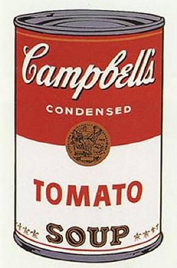
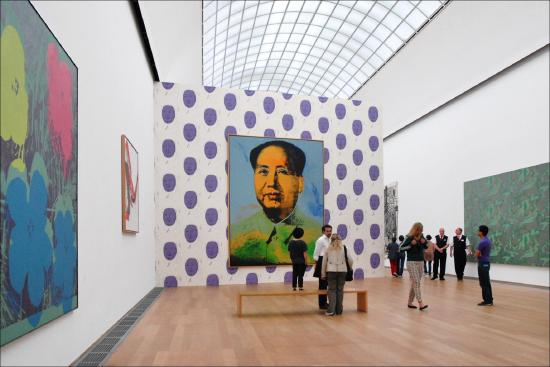
Warhol was an American artist leading the visual art movement with his illustrations and printmaking techniques. A graduate of Carnegie Institute for Technology, he moved to New York City and landed a job at Glamour magazine. Moving from illustrator to commercial artist in 1964, Warhol opened his studio, setting his career on a path to stardom. His work, a critique of the popular culture, was widely accepted and sought after, inflating the cost of his work. The highest price ever paid for a Warhol was $105 million for a 1963 painting. His work is extremely valuable and highly collected.
Edward Ruscha (born 1937) is an American artist and contributor to the pop art movement. Early in his life, he worked in a typography company and became interested in words and how they are shaped, then focused using letters in his artwork. As a graduate from the California Institute of the Arts, Ruscha created word paintings with typography. Twenty-six Gasoline Stations (14.3) is red text on a white background, and he invented a type of font called Boy Scout Utility Modern. Pay Nothing (14.4) imprints the simple lettering on top of a contrasting scene. Ruscha still paints today and exhibits in several museums around the world.
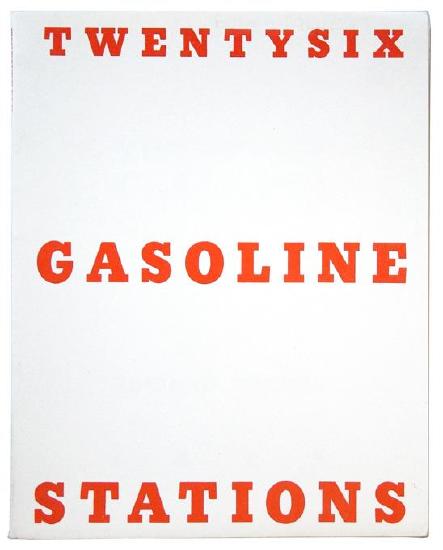
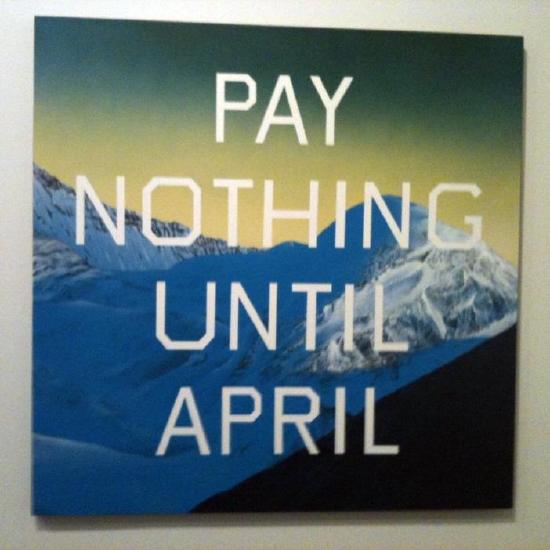
Robert Rauschenberg (1925-2008) was one of the most influential artists in America and provided the pivotal transition from pop art to Abstract Expressionism. Rauschenberg combined traditional with non-traditional materials in innovative ways. He studied art at Black Mountain College, where Josef Albers, one of the founders of the Bauhaus, was an instructor.
The artist’s job is to be a witness to his time in history” – Rauschenberg
Rauschenberg often traveled through Europe and Northern Africa, extending the influence of his art and ideas about popular culture. Riding Bikes (14.5) is a sculpture in Berlin, Germany. The piece is made of used bicycle pieces and neon lighting to emphasize the shapes, especially at night, because the sculpture resides in a reflecting pool of water. It is constructed from ready-made items that should move but are now forever frozen in time.
Bed (14.6) was one of his first artworks he described as combines, a method of combining multiple found objects on a canvas. For this image, he used an old pillow and sheet attached to a quilt, then splashed paint and scribbled with a pencil to achieve his ensemble look. He decided to use the quilt as a canvas because it was summer, and he did not need a heavy quilt.
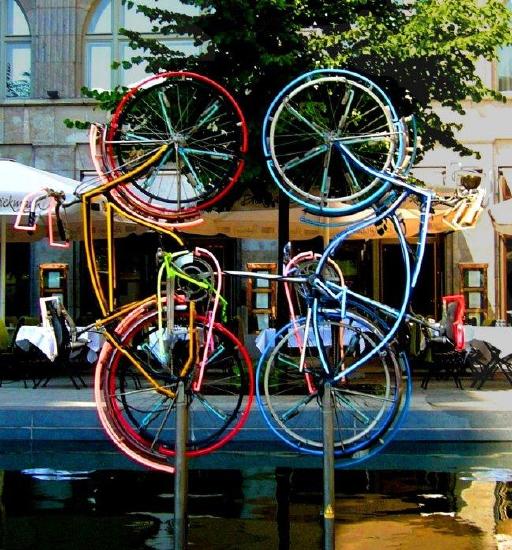
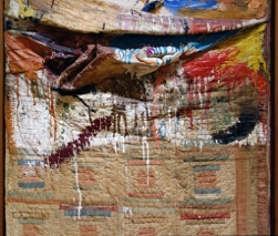 14.6 Bed.
14.6 Bed. Jasper Johns (born 1930) is an American painter and printmaker who is known for his patriotic pop art. Using single items like Three Flags (14.7) in a repetitious manner, Johns creates consistency in his art. Map (14.8) is a chaotic use of paint for a map of the United States, with bold colors and a geometric grid for the borders of the states. The names of the states are stenciled (14.9), yet the states are an approximant placement, not a realistic map.
 14.7 Three Flags
14.7 Three Flags
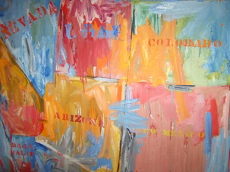 14.8 Map
14.8 Map
14.9 Map Closeup
Roy Lichtenstein (1923-1997) was an American Pop artist who used comic strips as his main inspiration. When comic strips are printed, the color is made of little dots against white paper, and the eye connects the colors to make a solid color. Lichtenstein created his art in this same manner, using colored dots on white paper. His art is so unusual that it became very recognizable. The Girl with Hair Ribbon (14.10) is one of his most well-known paintings from the time he focused on the faces of women. As the girl looks out at the viewer, she brings forth multiple expressions, leaving the viewer to wonder what she is thinking.
El Cap de Barcelona (14.11) was Lichtenstein’s first sculpture for the Olympics in Barcelona, Spain, following the tradition of colorful and unusual buildings and mosaics in the region. He created and abstract view of a woman’s head covered in the dots he used in his paintings. The mosaic tiles covered the concrete form in the tradition of Antoni Gaudi, whose work is found throughout Barcelona. Once called the "worst artist in the U.S." by Life Magazine in 1964, Lichtenstein art sells for over $43 million for one painting. His art is broad and depicts the popular culture in drawings and paintings and was famous in his lifetime. Lichtenstein had a humorous overtone to his work and always made the viewer smile.
 14.10 Girl with Hair Ribbon
14.10 Girl with Hair Ribbon  14.11 El Cap de Barcelona
14.11 El Cap de Barcelona 

